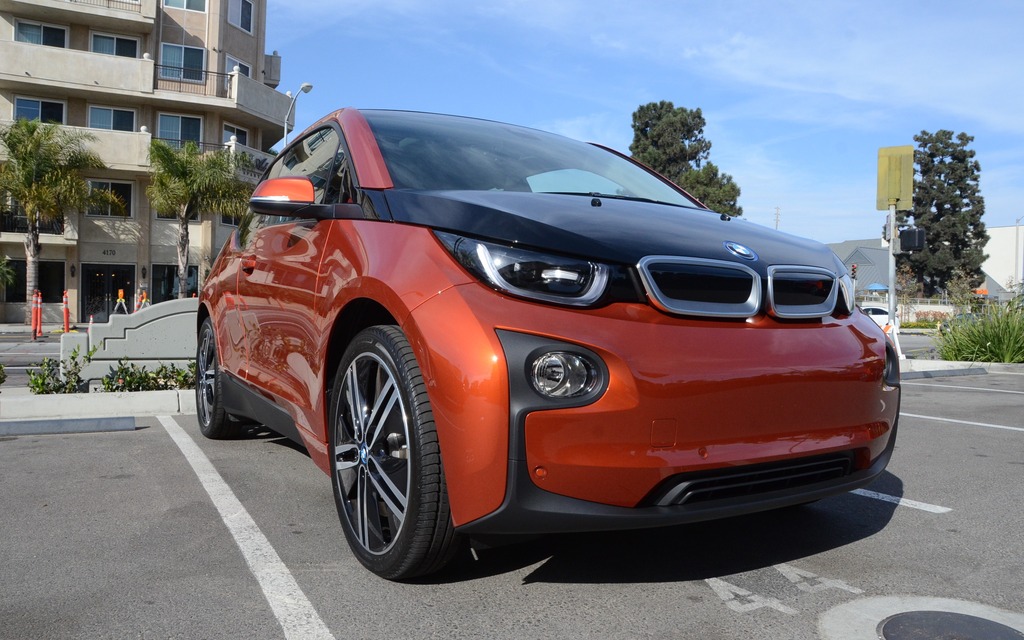2015 BMW i3: Electric Wonder


BMW invited journalists to attend the i3 press drive event in Los Angeles one day prior to the opening of the L.A. Auto Show. I was excited to learn I’d be able to participate, never having driven an electric vehicle. The i3 - and quite frankly the entire i series strategy - represents a huge risk for BMW. The manufacturer has invested over $4 billion to bring the electric cars to fruition, having built them entirely from scratch.
The i3 has a unique modular architecture BMW calls LifeDrive. Passengers sit in the Life Module which is a CFRP (carbon fiber reinforced plastic) ultra-lightweight structure. The aluminum drive module encompasses the powertrain and chassis. By locating the battery in the floor of the Life module, the usual divider in the floor is done away with, leaving the passengers with more space.
Read also
- BMW Invites Journalists to Test The New i3 Electric Vehicle Ahead of L.A. Auto Show
- BMW may boost i3 production amid strong demand
BMW greeted us at the L.A.-area hotel with a fleet of about twenty Solar Orange i3s in the parking lot. After a walk around and an in-depth description of the features from the BMW i series specialist, I was ready to get behind the wheel. My partner for this journey was the only other Canadian journalist invited by BMW, Mr. Michael Smith of Toronto-based Corporate Knights Magazine.
My first impression upon seeing the i3 was that it’s bigger in real life than I was expecting. It’s not a tiny car by any means and this is even more apparent when the rear half-suicide doors are opened. Adults won’t have any trouble getting in and out of the back seat.
Looks-wise, it’s certainly not your everyday vehicle. Exterior styling pushes the envelope and will make the car stand out quite a bit. While it won’t be everyone’s cup of tea, I much prefer something out of the mainstream rather than a bland-looking car for the masses.
The extensive use of lightweight material such as carbon fiber is readily apparent along the edges of the door frame and other parts of the vehicle. Entering the cockpit, I was greeted with a familiar BMW feel with an undoubtedly “fresh” look, though Michael actually used the term “organic” which suits it even better. The top of the dash is made of open-pore eucalyptus wood and makes for a high-end natural look and feel. The seats are a combination of naturally-colored leather and environmentally friendly textiles made from recycled material.
Dual LCD screens are used to display the vehicle’s information to the driver. The new “shifter” is actually just a thick nob like your turn signal but is on the opposite side of the wheel. It’s different but took no time at all to get used to. What does take time to get used to is that the car needs to be “turned on” rather than started. You rely on the gauges to inform you if the vehicle is operational.
After a brief familiarization we hit the road for our 2 hour cruise through the Hollywood Hills and back to downtown Los Angeles. Being all-electric, 100% of the torque is available right away. If you’ve ever driven a golf cart, it’s a similar feel. The i3 accelerates seamlessly and quickly when you need it. Even uphill we had no issues and to be honest, it yielded pretty incredible acceleration. The best part was that acceleration came without the financial and environmental guilt I usually get after opening the throttle in my gasoline-powered vehicle.
An aspect that concerned me while driving was how quickly the car decelerates when you take your foot off the gas. In many instances I didn’t even need to use the brake to come to a stop. I thought that this might represent a security issue for drivers behind me who might not have realized the car was slowing down. BMW thinks of everything it seems, because the tech people confirmed to me that the brake lights do light up even if the brake pedal is not depressed and the car is slowing down.
I found the car very responsive in the twists and turns while driving in the mountains. The turning circle was extremely small (it helped because we missed a few turnoffs and had to make a u-turn to get back on track.) The tester came with the optional 20-inch wheels which helped plant the car firmly to the ground and the i3 did everything I wanted and more. It’s not surprising considering the car weighs a mere 1195 kg. BMW lists the 0-100 km/h time as 7.2 seconds.
The range of the vehicle for everyday driving is between 130-150 kilometers which is not Tesla Model S good but is sufficient for the vast majority of daily commutes. For those who might have range anxiety, BMW has a range extender option where a small gasoline motorcycle engine is installed in the rear of the vehicle to generate power for the electric motor. The best part is the gasoline engine will never actually drive the i3. It simply serves to recharge the battery should you use up its entire capacity.
The Canadian base price for the BMW i3 before tax incentives is $44,950, and it will likely go into production in the second quarter of 2014.
I only had the car for two hours as opposed to the week-long periods that journalists usually get to test vehicles. The thrill of driving something totally new for the industry was quite pleasing and I left wanting more from this electric wonder.








